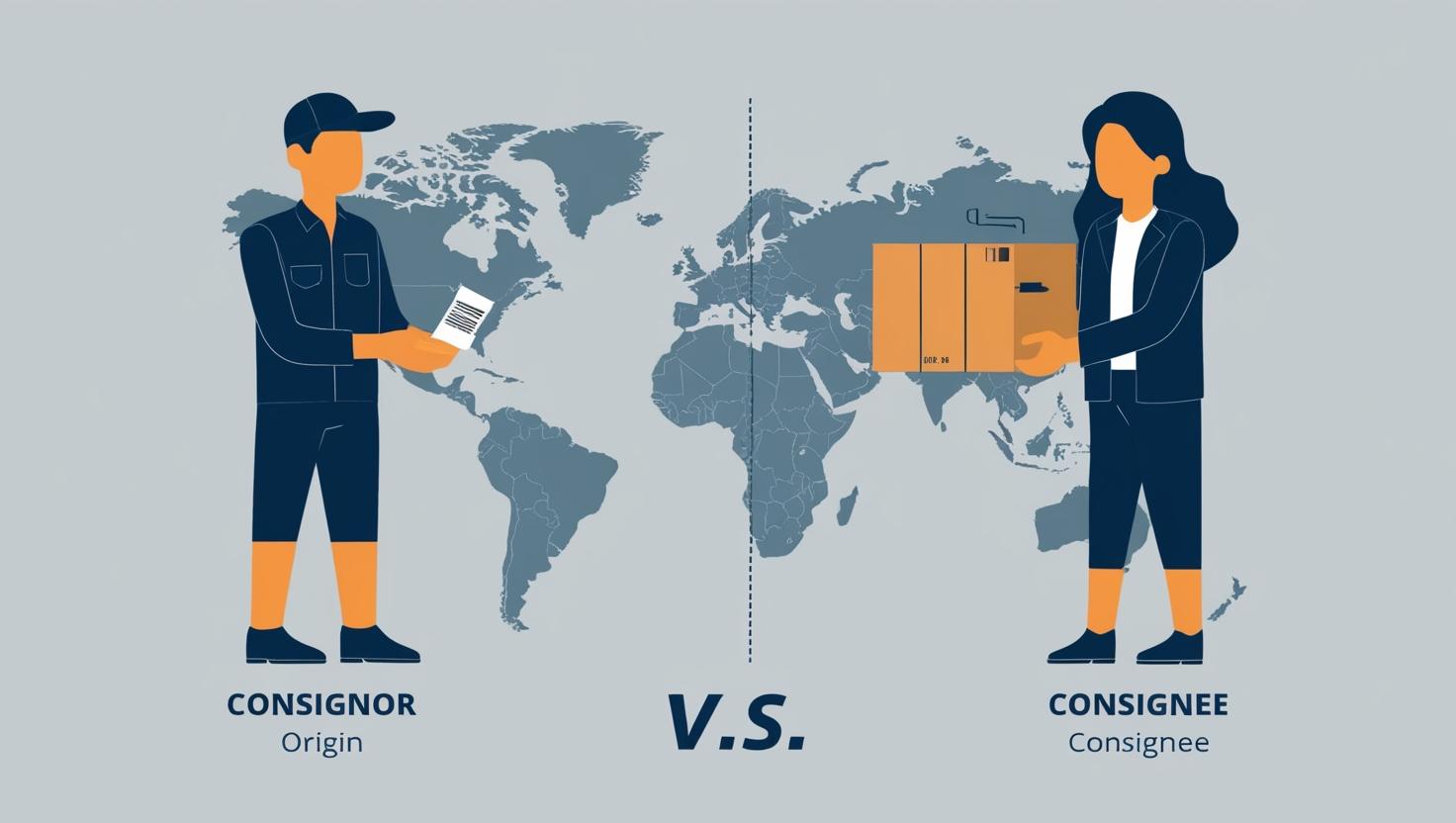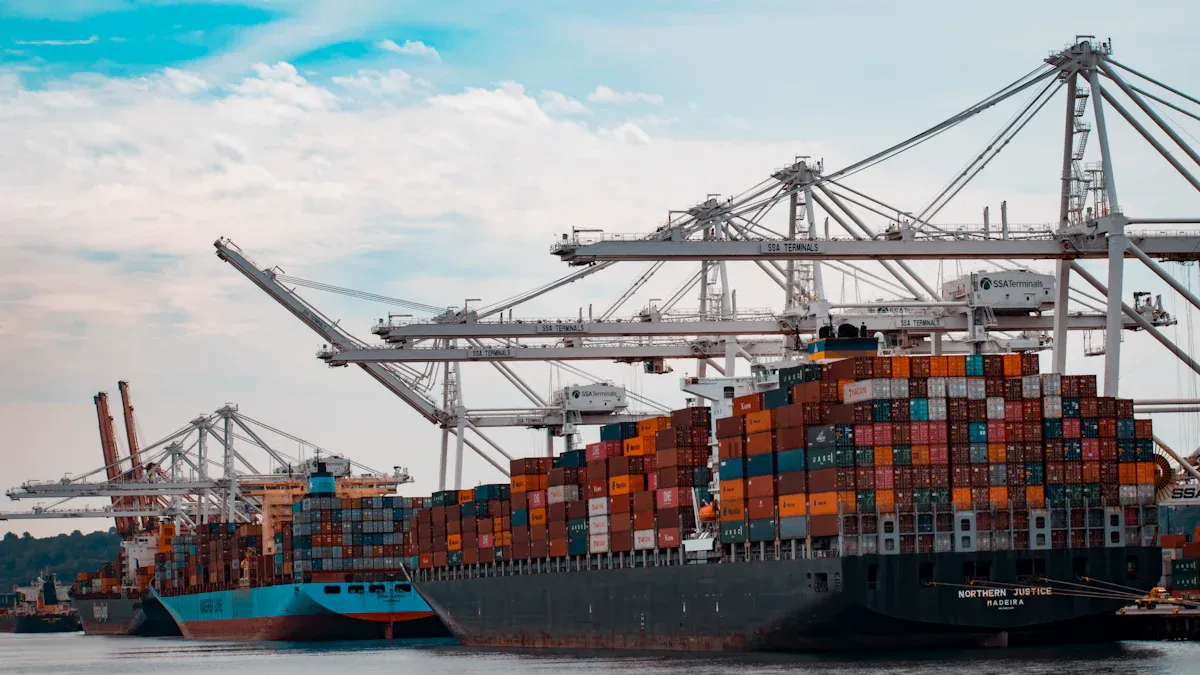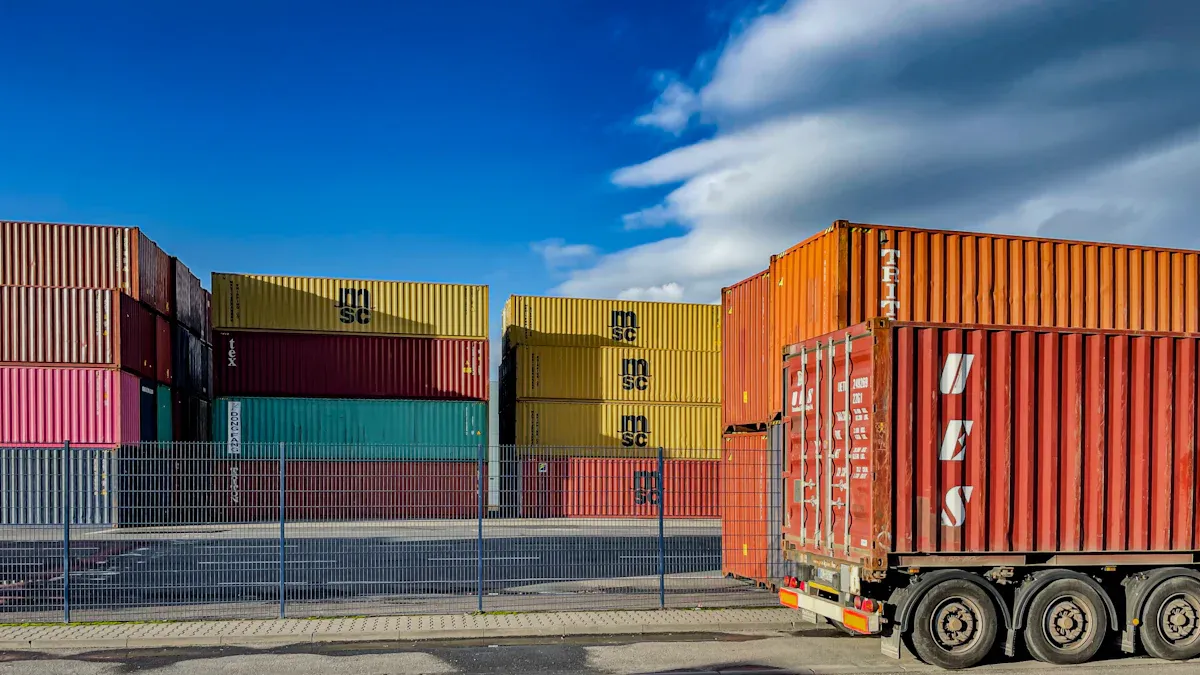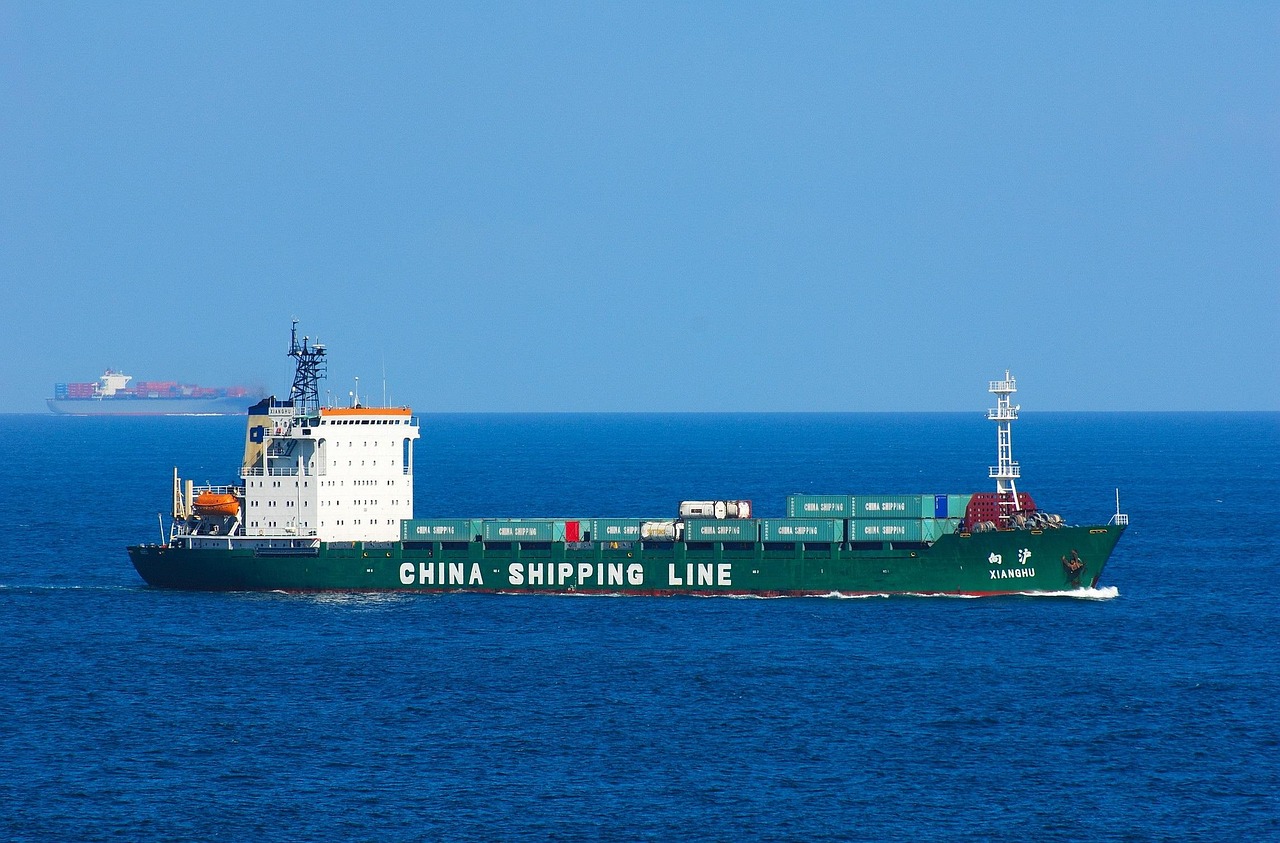Consignor vs Consignee: Breaking Down Different Roles in Your Freight Journey

In freight forwarding, understanding the differences of consignor and consignee is essential for smooth operations. These two roles define the start and end points of a shipment. Whether you’re shipping goods across borders or managing inbound inventory, understanding each role helps ensure smooth, compliant, and efficient operations.
Consignor vs Consignee: Definitions and Roles

Consignor: Responsibilities and Functions
The consignor is the party that initiates the shipment. Often the seller or exporter, the consignor prepares the goods, handles documentation, and ensures the cargo is ready for international transport.
Key responsibilities include:
Packing and labeling cargo
Preparing commercial invoices and packing lists
Ensuring export compliance
Coordinating with freight forwarders
Paying for freight and insurance (depending on Incoterms)
The consignor is often listed as the shipper on the Bill of Lading and may retain ownership of the goods until the consignee fulfills payment terms.
Consignee: Responsibilities and Functions
The consignee is the receiver of the goods. Typically the buyer or importer, the consignee is responsible for clearing the shipment through customs, receiving the cargo, and arranging last-mile delivery.
Key responsibilities include:
Receiving and inspecting the shipment
Handling import duties and taxes
Clearing customs
Managing unloading and distribution
Taking ownership once contract terms are met
In most international shipments, the consignee appears on the Master Bill of Lading (m B/L) and is the final point of delivery.
For more information on consignor vs consignee roles or to access templates for shipment documentation, contact info@yqn.com. YQN Logistics specializes in providing expert guidance for freight operations.
Consignor vs Consignee: Key Differences

Check the below table to compare the key differences between consignor and consignee.
Aspect | Consignor | Consignee |
|---|---|---|
Role | Sends goods (exporter/seller) | Receives goods (importer/buyer) |
Key Duties | Prepares shipment, pays freight | Clears customs, receives cargo |
Documentation | Issues invoice, packing list, HBL | Uses MBL to receive shipment |
Payment Obligations | May cover freight and insurance | Pays duties, local delivery costs |
Ownership Transfer | Retains until payment is fulfilled | Takes upon contract completion |
Consignor vs Consignee: Typical Mistakes and How to Avoid Them
1. Incomplete or inaccurate Consignor/Consignee information
Risk: Customs delays, failed deliveries, or shipment returns.
Typical issues:
Declaring high-value shipments under a personal name triggers customs scrutiny.
Incomplete addresses or wrong contact info leads to delivery failure.
Best practice: Use the official company name, complete address (with ZIP/postal code), phone, and email. Ensure all details match the invoice and bill of lading.
2. Consignee lacks import clearance rights
Risk: Customs won’t release goods, leading to port storage or return.
Typical issues:
Naming an agent not authorized or pre-registered as the importer.
Listing a client who lacks an import license or tax ID.
Best practice: Ensure the Consignee holds the proper clearance credentials—e.g., China’s import license or a U.S. EIN.
3. Mismatch between Consignor and invoice issuer
Risk: Customs may flag discrepancies and trigger investigations.
Typical issues:
The shipper on the bill of lading differs from the company on the invoice.
Documents aren’t updated after resales or agent involvement.
Best practice: Align all documents—invoice, packing list, and B/L—with the same shipper. If needed, include a valid power of attorney or agency letter.
4. Incoterms conflict with roles in documentation
Risk: Disputes over responsibility and cost due to misaligned terms.
Typical issues:
Using CIF while still assigning transport responsibility to the Consignee.
Using EXW but the shipper fails to provide full export documentation.
Best practice: Ensure the roles of Consignor and Consignee match the Incoterms defined in your contract.
5. Using “To Order” without proper endorsement
Risk: Goods get stuck at destination, waiting for unclear delivery instructions.
Typical issues:
“To Order” listed on the B/L without endorsement or banking instructions.
L/C payment used but no process in place for B/L release.
Best practice:
Only use “To Order” when you clearly understand how to handle negotiable B/Ls, L/Cs, or D/P payments.
Real-World Scenarios Illustrating Consignee vs Consignor
Real-world cases often highlight the distinct roles of consignors and consignees. For example, a manufacturer (consignor) consigns goods to a retailer (consignee) under a consignment agreement. The consignor retains ownership until the retailer sells the goods. If the retailer fails to store the goods properly, they bear the risk of damage.
The table below compares their roles in such scenarios:
Aspect | Consignor | Consignee |
|---|---|---|
Rights and Responsibilities | Retains ownership until sale | Responsible for storage and care of goods |
Ownership and Risk | Ownership remains with consignor | May bear risk if goods are damaged |
Bankruptcy and Insolvency | Goods typically not part of consignee's estate | Must return goods if properly documented |
International Compliance | Not directly involved in customs | Must ensure accurate documentation and payment |
Example | Manufacturer consigns goods to retailer | Retailer handles customs and pays duties |
Conclusion:
Understanding the difference between a consignor and consignee is more than a legal requirement—it’s a logistics advantage. Clear roles, strong documentation, and mutual accountability ensure every shipment moves without disruption.
YQN Logistics works closely with exporters and importers to simplify cross-border freight, handle compliance, and optimize global supply chains.
📩 Contact us at info@yqn.com for shipment documentation templates, role guidance, or 1-on-1 consultation.
FAQ
What happens if the consignee refuses to accept the shipment?
If the consignee refuses the shipment, you (as the consignor) must arrange for its return or storage. Additional costs, such as storage fees, may apply.
Can the consignor and consignee be the same person?
Yes, the consignor and consignee can be the same person or entity. This often occurs when shipping goods to yourself at a different location.
Who is responsible for customs clearance?
The consignee typically handles customs clearance. You must ensure all required documentation is accurate and complete to avoid delays or penalties during the process.
💡 Tip: Always double-check customs requirements for the destination country to ensure compliance and avoid unexpected issues.
See Also
Transforming Fraud Into Freight Triumph: Our Client's Journey
Understanding SCAC Codes: Essential Knowledge for All Shippers
Preventing Demurrage Fees: Key Strategies for Quick Cargo Retrieval

Shipping with YQN - Global Logistics at Your Fingertips
YQN has established subsidiaries worldwide, covering North America, Latin America, Southeast Asia, and the Middle East. We have partnered with 300+ top shipping and airline companies and have access to 3500+ high-quality supplier resources. YQN also has a professional customer service and fulfillment team of over 500 people to provide more worry-free and efficient international logistics services.
Contact Us
You can also email us at info@yqn.com.

